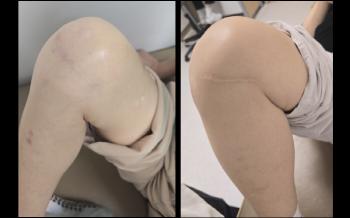Chest tightening pain due to exercise and stress, suspected angina...What makes it different from myocardial infarction?
|
Recently, the number of patients with coronary artery disease including angina has been steadily increasing in Korea due to aging, westernized eating habits, and lack of exercise. According to the Health Insurance Review and Assessment Service, the number of patients treated for angina increased from about 23,000 in 2018 to about 31,000 in 2023. This is an increase of about 35% in five years. In particular, the incidence rate of the elderly in their 60s or older is increasing, emphasizing the importance of preventing cardiovascular disease and early diagnosis.
◇ Suspect angina in chest pain after exercise/stress
Angina usually manifests as a pain that seems to be tightening or crushing in the center of the chest, which can spread to the left shoulder, arm, neck, jaw, and back. Usually, pain lasts less than 5 minutes, occurs in exercise or stress situations, and improves when resting.
On the other hand, myocardial infarction requires more attention because the pain lasts for more than five minutes and often does not improve even when resting. The problem is that many patients do not visit hospitals because they mistake these pains for indigestion or muscle pain. However, in the case of myocardial infarction, delayed treatment can lead to permanent myocardial damage, so if chest pain that has not been experienced is repeated or persists, you must seek specialized treatment.
◇ Cholesterol deposition narrows blood vessels, so be careful especially after middle-aged people
The most common cause of angina is atherosclerosis. Cholesterol builds up on the walls of blood vessels, forming an atherosome (a mass of fat and waste deposited on the walls of blood vessels) commonly called 'plaque', gradually narrowing the blood vessels, resulting in symptoms as blood flow decreases in situations such as exercise.
Hypertension, diabetes, dyslipidemia, smoking, obesity, etc. worsen atherosclerosis, increasing the risk of angina. In particular, middle-aged men over 50 and postmenopausal women are at increased risk due to hormonal changes and metabolic diseases.
◇ From electrocardiogram to procedure... Accurate diagnosis and treatment are important
If angina is suspected, initial tests such as electrocardiogram, chest X-rays, and blood tests are performed, starting with listening to a medical history and a physical examination. Subsequently, detailed examinations such as exercise load electrocardiogram, nuclear medicine myocardial tomography, coronary artery CT, and echocardiography are performed for diagnosis.
If myocardial infarction is strongly suspected in the initial examination or abnormal findings are confirmed in the detailed examination, the vascular condition will be checked directly through invasive coronary angiography, and if necessary, coronary angioplasty such as balloon dilatation or stent insertion can be performed immediately.
◇ Even after treatment, lifestyle management is essential
Treatment of angina is divided into medication, procedures, and surgical surgery (corrhotic artery bypass). In early patients, vasodilators, antiplatelet drugs, and hyperlipidemia drugs are used to relieve symptoms and prevent disease progression.
However, if there is no improvement in symptoms or the blood vessels are severely narrowed, a procedure or surgery may be necessary. Even after treatment, steady lifestyle management such as healthy eating habits, regular aerobic exercise, smoking cessation, stress management, blood pressure, blood sugar, and cholesterol control is essential. In particular, if symptoms are repeated or chest pain that is different from usual persists, it is important to quickly visit a hospital and receive an accurate diagnosis.
Professor Park Geun-hee of the Department of Cardiology at the National Health Insurance Ilsan Hospital emphasized that `As angina can be a precursor to myocardial infarction, if symptoms repeat or last more than 5 minutes, you must visit a hospital.' `Especially for high-risk patients, it is the key to preventing cardiovascular disease to manage them in advance through regular medical checkups.'
|
This article was translated by Naver AI translator.





